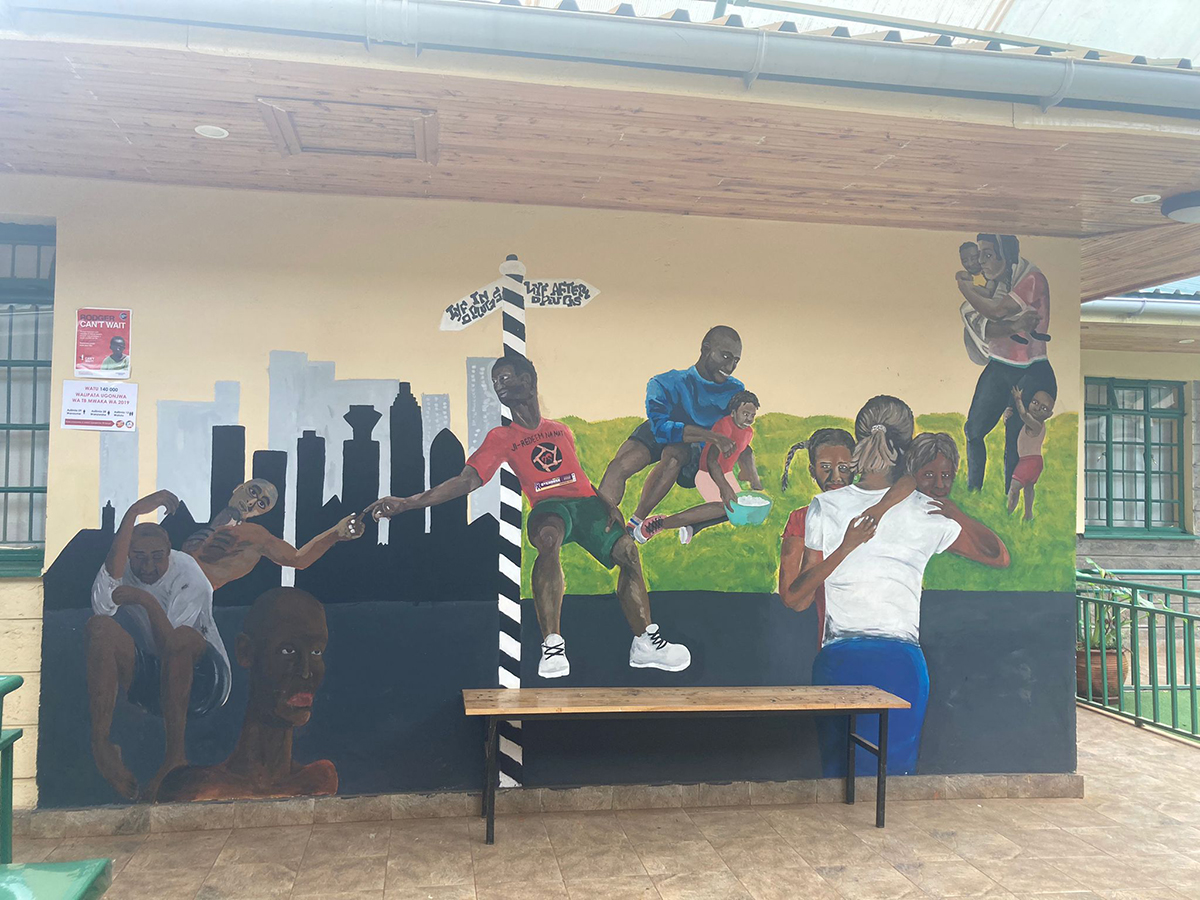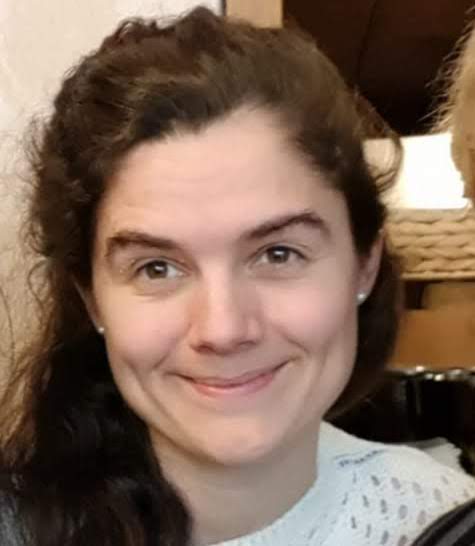Kenya: How MSF is helping drug users rebuild their lives
Part of MSF’s humanitarian work involves reaching people often excluded from healthcare services. At the first clinic of its kind in Kiambu County, Kenya, one MSF team is working to provide a 'one-stop shop' for people seeking treatment for heroin dependency. Psychiatrist Lindsay Solera-Deuchar explains…
The mural on the wall of the clinic here in Kiambu depicts two very different worlds.
On the left of the painting, it is dark and grey, and people sit alone, malnourished and depressed. On the right, it is sunny, people look healthy, and are surrounded by family and friends.
In the centre, an arm pulls someone from the dark to the light side, and the Swahili-English words “Ji-redeem na MAT” encourage the reader to “Redeem yourself with MAT”.
MAT is ‘medically assisted therapy’, a treatment for heroin dependence. It involves a daily dose of an oral medication related to heroin (either methadone or buprenorphine), which lasts in the body for over 24 hours, preventing withdrawal symptoms and reducing cravings.
There’s strong evidence that medically assisted therapy dramatically reduces the harm associated with heroin addiction...
A place of change
The clinic, which opened in 2019 as a partnership between the Kenyan Ministry of Health and MSF, provides this treatment to a growing number of clients – currently over 400 people.
The mural represents the transition people make as they join the clinic. Although arguably too simplistic to capture the complexity of addiction, this painting was designed by people with personal experience of treatment for heroin addiction. For many, it really does illustrate the dramatic change in their lives that coming to the clinic has had.
An evidence-based approach
There’s strong evidence that medically assisted therapy dramatically reduces the harm associated with heroin addiction, including associated health problems and fatal overdose. And, instead of spending every hour of every day in a race against time to find enough money for another fix before getting withdrawal symptoms, people can take their treatment each morning and focus their attention on rebuilding their lives.
Harm reduction is an internationally recognised best practice approach to treating drug and alcohol problems. Rather than necessarily aiming for abstinence, we accept that people may well continue to use substances and offer them a package of services to help reduce the harm from that use. For those who do want to become abstinent, of course, we support them in achieving that.
London to Kiambu
On arriving in Kiambu for my assignment with MSF, I was curious to find out what the similarities and differences would be between this service in Kenya and one that I had worked for in London.
Fundamentally, I found that addiction is of course no different in Kenya – people experience the same battles with the illness, with sometimes devastating impacts on their lives.
But, there were also some differences that caught my attention...
1 | Support and stigma
Firstly, I can barely remember seeing any family members in the clinic in London – many people had become estranged from family because of their addiction problems, and many were homeless.
In Kiambu, it is a common sight to see grandmothers or cucu (pronounced shosho in the Kikuyu language) escorting clients into the clinic, while family members often pay the daily fare for their loved one to travel to the clinic.
Homelessness is also quite uncommon. For those patients who had lost ties with their families and were without a place to stay, there was almost always someone in the community who hosted them.
The strength of the family and community in Kiambu is clearly a big support for people tackling their addiction problems. That’s not to say that people who use drugs in Kiambu don’t face a huge amount of stigma – unfortunately, they do – but perhaps a sense of obligation to family and community can sometimes take precedence.
2 | Unshakeable determination
The other thing that struck me about some of the clients in Kiambu was their sheer determination to succeed in overcoming their addiction.
Many clients had to travel for several hours each day to come to the clinic to take their treatment. In London, we have the luxury of local pharmacies supplying people with their daily treatment. However, Kiambu is the only large clinic of its kind in the whole county. It can take several buses and several hundred Kenyan Shillings to travel from the other side of the county to the clinic.
Sometimes it was a challenge discussing with clients how they would avoid triggers for relapse – they would say “it’s just impossible for me to use heroin again”. At first, I thought this sounded unrealistic, and for some it probably was, but for others, there seemed to be a deep-rooted unshakeable determination to never use drugs again.
3 | The "one-stop shop"
The service provided for clients in Kiambu is really of a high quality, and even more comprehensive than in my clinic in London.
The idea is that it is a ‘one-stop shop’, meaning that all healthcare needs are catered for under one roof.
This includes treatment for HIV, hepatitis, tuberculosis (TB), malnutrition, and any other physical health problems (at a primary healthcare level), as well as mental health and psychosocial support. We have a full team of social workers, addiction counsellors, and a clinical officer specialised in psychiatry. There are individual counselling sessions, group sessions, and regular mental health reviews.
4 | Experts by experience
The health promotion team is made up largely of some very dedicated ‘peer educators’ and offers regular education sessions on a variety of healthcare issues relevant to our clients. These peer educators have their own personal experience of heroin addiction and are the ones who welcome clients to the clinic, help them navigate the system, and offer support and encouragement.
The role of service-users in the running of the clinic in London was nowhere near this prominent, and I think we can learn a lot from this model.
Feeling understood
As a psychiatrist, my time was spent largely in the mental health room of the clinic, supporting my Kenyan colleague, Gladys, the psychiatrist clinical officer.
As well as providing primary healthcare and adjusting methadone doses, she reviews every client’s mental health every three months and provides psychiatric treatment and follow-ups for clients with co-existing mental illnesses.
As a psychiatrist, Gladys’ role is medication-focused, but she always gives patients time to talk, hearing their concerns and providing some support to them.
She has a real talent for connecting with these clients, who live very different lives, yet seek her out, saying they feel understood by her. The number of patients on psychiatric medication at the clinic is unusually low, and I feel like Gladys and the team of addiction counsellors are due a lot of credit for this.
Across the mural
I left my assignment feeling impressed by this comprehensive and person-centred service that the team is providing, as well as humbled by the clients and their determination to cross from the left to the right side of the addiction mural.

